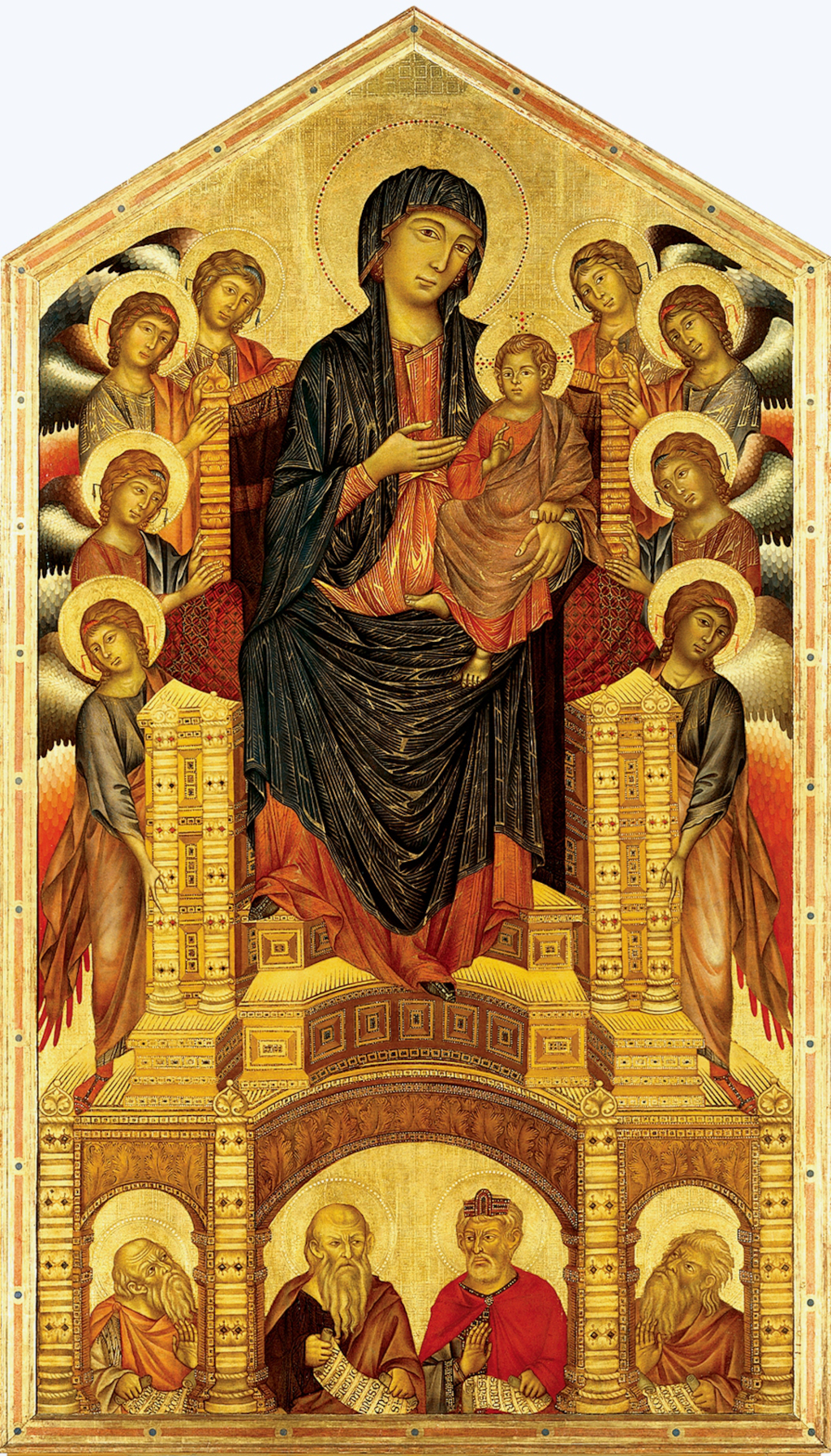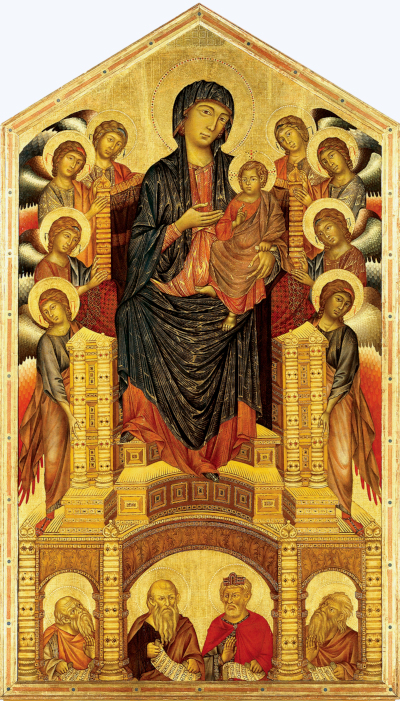The Santa Trinita Maestà by Cimabue is dated to around 1288-1292 and resides today in the Uffizi Gallery in Florence.
Introduction
Cimabue devoted his career to religious themes and produced a number of memorable Maestà works amongst that. He would become an influential artist who helped bring about many of the artistic changes which later occurred in the Italian Renaissance.
Description
This detailed piece remains in remarkably good condition as compared to other items from Cimabue's oeuvre. The artist pictured mother and child centrally within the Santa Trinita Maestà, sat upon a throne. Besides them are a series of angels, with several prophets then placed at the bottom of the composition.
Whilst the Italian Renaissance is famed for its inclusion of emotion within portraits, as well as the use of secular content, Cimabue came earlier than this. Here we find serious expressions, with neither sadness nor joy, and a relative neutrality. The facial features are also identifiable as from the hand of Cimabue, such as the long, narrow noses which appeared in most of his portraits.
From an artistic perspective, the touches of detail around the throne are a delight - with a clever use of angles and patterns to fill interest in and around each of the portraits. Additionally, the clothing, particularly on the Madonna, is also exquisitely delivered, with considerable attention given to the manner in which the cloth hangs from the young woman.
Style
The way in which the Madonna gestures her hand towards the baby is typical of Byzantine art. This ensures that the two do not need to strike eye contact with each other, as would be found in later phases of the Italian Renaissance. Cimabue can be considered someone who helped bring about this transition, through his own work, and also in the pupils that he taught within his studio.
Painting Format
The painting was completed using tempera on panel, which was the most common painting medium in Italy at the time. Cimabue produced this work on a large wooden panel which measures close to four metres in total, which offered him more than enough space to implement the finest of detail across the various elements of this work.
The structure of the wood gave a pointed section at the top, whilst the rest was in a rectangular format. Artworks were often designed in this manner in the 13th century, sometimes in order to fit into architectural features, such as rounded corners.
The Santa Trinita Maestà enjoys amongst the strongest attributions to Cimabue, of all artworks in his career. Very few critics have suggested any other hand as being responsible for this beautiful piece. New scientific research and understanding around 13th century art has, if anything, solidified this view yet further.
Re-location of the Santa Trinita Maestà
The painting would be installed, as intended, at the Santa Trinita until 1471, or so according to Italian art biographer and artist, Giorgio Vasari. Over the course of that period, Cimabue's work would lose popularity and new styles would gain favour. Consequently, this work was moved to a less prominent position, before later being removed entirely and taken to the Galleria dell'Accademia in the early 19th century, and then on to the Uffizi in 1919.
Restoration
The pointed section at the top of the work was removed, and the painting amended to form a rectangular form some years ago, before eventually being restored to the original layout. Several restoration projects have been completed in recent years in order to preserve the original detail, helping this piece to remain in relatively good condition, considering its age.
Large Image
 Santa Trinita Maesta in Detail
Santa Trinita Maesta in Detail




